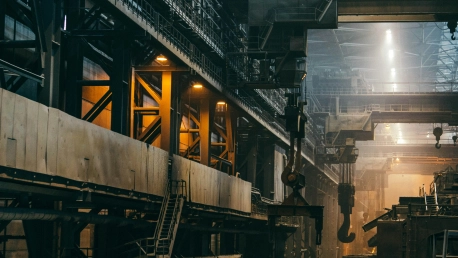With the climate crisis at humanity’s doorstep, Europe is turning the spotlight on one of its more entrenched problems: industrial emissions. Contributing approximately 20% of the continent’s total greenhouse gases, the industrial sector is in dire need of a sustainability makeover. Amidst a slew of potential solutions, the direct electrification of industries emerges as a potent strategy—one that’s unfortunately underappreciated and underutilized.Direct electrification stands as a beacon of hope in the murky waters of industrial decarbonization. It’s a path that could lead European industries toward a brighter, greener future. According to the insights from think-tank Agora Industry, direct electrification has the potential to revolutionize the industry. By 2035, it’s projected that direct electrification could supply up to 90% of the industrial process heat necessary, slashing two-thirds of current emissions. It’s a future where electricity, rather than fossil fuels, heats and powers industrial processes—a significant pivot that could dramatically reduce the sector’s environmental footprint.
Reassessing Priorities: Electrification vs. Hydrogen
Hydrogen Hype and the Neglected Electric Avenue
The current European climate policy arena has been abuzz with discussions about hydrogen technology—an area that, though promising, has seen slower than anticipated adoption. Coupled with higher costs, the hydrogen solution is not without its shortcomings. Despite these snags, subsidies and significant attention continue to flow into the hydrogen stream, partly fueled by initiatives like the EU Hydrogen Bank and the IPCEI scheme. In stark contrast, direct electrification solutions, which could potentially offer swift and effective emissions reductions, receive comparatively little limelight.There’s a clear need for a shift in focus. Policymakers are called upon to recognize the immediacy and viability of electrifying industrial processes. Electrification, like hydrogen technology, faces its own set of challenges—grid updates, policy adjustments, and scaled technological development to name a few. Still, it stands as a promising contender in the race to decarbonize. The push from the think-tank is for a rebalance, a policy that places direct electrification on the same pedestal as hydrogen to ensure a comprehensive approach to emissions reduction.
Breaking Barriers and Championing Policies for Electrification
Key to the success of direct electrification is addressing the barriers hindering its adoption. Among these is the significant lack of awareness, particularly among smaller companies. Moreover, current European legislation, such as the Renewable Energy Directive, often fails to promote electrification with sufficient vigor. The proposed solutions aren’t mere tweaks but paradigm shifts—setting bold deployment targets for direct electrification and establishing dedicated funding schemes that could level the playing field.The infrastructure upgrades needed to make direct electrification a reality raise eyebrows due to their complexity and cost. Initially, these concerns nudged policymakers toward hydrogen. But as we edge closer to dire environmental deadlines, the call for a revamped power grid grows louder. A crucial element of these upgrades is the necessity for regulatory flexibility that allows grid operators to anticipate and plan for a surge in electric demand—a controversial journey that includes the prospect of investing in what might sometimes be underutilized capacity.
Looking Ahead: An Industrial Electrification Plan
The Alliances and Legislative Modifications for Electrification
As the climate emergency looms, Europe confronts a pressing challenge: curbing industrial emissions that account for about 20% of its greenhouse gases. The industrial sphere is urgently seeking sustainable reform. Among various proposals, direct electrification of industries is a promising yet underestimated solution.This strategy is like a lighthouse guiding the industry through the fog of decarbonization. Pioneering work from Agora Industry suggests that direct electrification can be transformative. By 2035, it might deliver 90% of the industrial process heat, cutting emissions by two-thirds. This scenario envisions electricity displacing fossil fuels for heating and operations in industries, thus effectively shrinking the sector’s carbon footprint.Europe’s industries could soon embark on a transformative journey toward a more sustainable and greener horizon with direct electrification lighting the path.









